|
Aftermath at Tate Britain is a show that displays art from during, as a reaction to and after the first world war. It focuses on British, French and German art and is an intensely powerful show. In fact I found it almost overwhelming. There are parts of it that really hammer home the horrors of war. It is a stunning show of both artistic, historical and political import. Any tub bashing hawk should be made to go round this show, until they get it. As with all good shows there were some old friends and some new people I had not heard of, or had heard of but not really appreciated. The first room contained pieces of art, reflecting the war, either done contemporaneous or completed in the years that followed. It contained both paintings and sculpture as did the show as a whole. There were some very striking pieces right from the start. As you enter the door you are greeted by the rather threating presence of Joseph Epstein’s Torso in Metal (above). A statue of a mechanised torso, ribs and insides showing and with a robotic alien like appearance. In fact this set a thought running that was confirmed by much of what I saw in the rest of the show. Many of our cultural images of horror, gothic horror and science fiction seem to come from this period (particularly horror). The images that the tortures of war caused these people (mainly men in the case of this show) to produce resound still in our culture. Torso in Metal certainly has echoes in various sci-fi robots I have seen. It took me quite a while to get out of the first room as there was so much to see of such quality. The picture that immediately called out to me was Charlie Simms The German Front Line. It is a large piece, dominating the wall. The foreground is the trench itself which is dominated by white. The rocks and mud are given a white almost snow like appearance, as though it is somehow fading out of existence. This causes the red corrugated iron, and the dark entrances to the dug out to stand out even more. It is all under an ominous purple sky, in front of a desolate landscape (that phrase is going to be in this blog a lot) punctured by a glinting far off church tower. Round the corner from this a very different piece by again a name new to me, but one who I came away from the show a firm fan of, that of Christopher Nevinson (above). It is called Ypres aft the First Bombardment. The canvas is full of these abstracted angular buildings, rotated to view from various views and transected to see inside. There are no people. One of the buildings is on fire, and this oval and circular gray smoke ascends from the centre of the piece. It has an ascetic appeal but this gives way to a nightmarish quality (another description that will re-appear). Opposite this picture was a very interesting vitrine (glass display case). In it were various objects, such as pen knives, made from discharged bullets, and models made from spent shell casings. Made me think of the alternating horror and boredom of war. You can picture these men, sitting there, nothing to do but wait for disaster, carving these things. In the middle of the room is a sculpture occupying a rectangular area of the floor is Wilhem Lehmbrack Fallen Man (above). The title hints at the pose, kneeling with the head on the floor, head bowed so the face is hidden from the front, arm outstretched in front of him. The figure is naked, and emaciated and when you orbit round to see the face, it is a picture of despair. It is beautifully cast from bronze. As you can see it (and many other pieces) made quite an impression. William Orpen (above) was another new name to me and one who came out of the show high in my estimation. He had two pictures in the first room of which I greatly preferred Grave in a Trench. What is particularly convincing is the use of soft, almost playful pastel colours that contrast entirely with the subject matter. It is not a picture that instantly grabs you, because of its muted demeanour but it very much draws you in, not least because you have to look quite hard to see the grave. We have had British and German now it is the turn of the French in the form of Luc- Albert Moreau. It is a strangely sparse piece. A sort of grey cloth draped over a shattered tree (shattered trees are a feature in this show). All composed in this angular style with blocks of tonally shifting colours. It has a sorrowful feel and it reminded me of Paul Nash. Maybe it likewise reminded the curators as they had but a Paul Nash next to it, all be it one slightly different from his usual style (I am fan of Nash and have written about him before). It is call simply Wire and shows a shattered tree (told you) bedecked in broken and twisted barbed wire giving the appearance that the wire is growing out of the tree. This was one of the images that very much reminded me of a horror film set. I am not the first to say this. Zombies were famously inspired by the James Whale (check this) witnessing blinded gas attack survivors stumbling along. The final piece that grabbed me in the first room (yes we are still in the first room was by Felix Vallotier and is called Military Cemetery. It is a field of closely packed almost uniform crosses merging together into a grey mass as the recede into the distance. They speak of anonymity. Yet most of the crosses have been decorated, a personal touch has been added. Because of the subject matter there is a modern almost structural form to all those crosses. The message is pretty compelling. The next room was not as interesting. It was basically state and memorial art in remembrance of war. Grand in its pomposity and all about the glorious gallant dead, the nobility of war etc. Technically impressive but less interesting. There were four unusual pieces in there that caught my eye. The first was a German nail object. As the name suggests it is a picture made by nails hammered into to a painted bored. The effect is very German, very militaristic. I had never seen this before and the one on display was an eagle over the colours of the German tricolour. It was called rather ominously strength through unity. Literally hanging over the other pieces and casting an impressive shadow against the far wall was Ernst Barlach’s (above) the Floating one. As sort of weird impassive angel like figure, with a seraphic expression, arms folded over the chest, floating calmly above everything. It is beautifully carved in an angular but soft style. Against one wall in a glass cabinet was a marquete for the Soisson memorial by Eric Kenning. Three identical looking very modernist blocky angular soldiers stand next to each other, flanked by shells. The square nature of the identically faced figures is reflected in the equipment they are bedecked with. It is very similar to the piece it hangs next to, in rather a good stroke of curatorship, that of Marcel Gramaire’s War (above). You have these solid looking, very mechanical blocky soldiers. Depicted with this lovely sort of soft speckly almost pointillist paint. I like this one very much and Gramaire is another name that is coming away with me. The next 2 to 3 rooms are a bit hard to take, emotionally speaking. The theme of all of them is the aftereffects of war and the pictures scratch at the psyche. I found it quite upsetting and I kept wondering about the mental state of the men who produced these pieces. Fractured and distressed presumably. So round the corner you have a number of lovingly rendered portraits of soldiers, done in a simple watercolour style by Henry Tonks. The subjects all have horrific facial injuries. One of them is missing most of his lower jaw. Henry Tonks was working with a plastic surgery unit and the drawings were to record the before surgery state of these poor people. I can feel myself welling up just recalling it. It’s powerful stuff and pretty much sets the tone for the next few rooms. Along the wall at right angles to this you have Sella Hasse’s etching One Arm War Blinded Man at a machine. It is all done in firm blocks of black and strong black lines. The man, with his artificial arm is rendered to appear as though he has been reduced almost to a machine himself. William Orpen reappears with a piece called Blow up. An almost naked, skinny, young alien like soldier, wearing only a helmet and cloth over his privates stands in a destroyed landscape. Again the use of these calm pastel colours is at odds with the subject and the imagery. We also now start having appear the giants of post war German art, the first up is Otto Dix. The pieces are sketches or drawings. Some of them were studies for paintings that did not survive the advent of the Nazis and the second world war (Dix along with a number of other German artists such as Max Enst and were labelled a decadent artists and their work destroyed). The first haunting piece you come across is called the Prostitute and the Disabled War Veteran. It has a sub title, Two Victims of Capatilism (above). She is Haggard and defeated while he has been horribly disfigured, his face shattered, by the war. It is a simple line drawing but very effective. There are more of Dix, along the dividing wall, showing war veterans deformed and dehumanised, very effectively portrayed in a surrealist style. I defy anyone not to be moved by this. Around this partition the style backs of a little. You have a wonderful mad assemblage of news papers by K Schults (above). There is a small niche set into the piece and sitting in these niche are two tiny models of dogs. They give the picture its name, a picture of two dogs. Quizzical was my reaction to this. More ghostly and sombre is Andre Mosson’s Piccardy Road. You have this empty road leading through an abstracted landscape with tomb like structures on the floor and twisted trees. It is all misty and done with these pale pastel colour. Much more colourful, indeed packing a real punch in that respect is Max Ernst’s Celebs (above). This is a famous painting and chances are you will recognise it. The large grey elephantine machine, with a top resembling a helmet, sucking up something through the trunk like house. Sitting in front of it an a striking contrast both tonally and in subject is this headless naked female torso. Subtle fish swim in the sky. The next room dives you back into despair. It shows prints. These prints by various artists emphasise the horrors and the effect of war. This is done best by the series displayed in the square case in the middle. It is called the War and it is again Otto Dix. They are truly horrific. For example the Foxhole where you have this plump evil cackling figure playing cards but standing to one side is this near naked, thin elderly man. They all have a similar message and you might well recognise the skull, infested with maggots which is quite a famous image. The next room is called a Return to Order and is frankly something of a relief. Because of the nature of the show (and well frankly art generally) there aren’t many women in this show. Winifred Knight’s the Deluge appears in this room for reasons that seemed a little strained to me but there was a very good painting by Dorothy Bett called War Widows. You have this group of women, all dressed in mourning black, against a yellow cloth they are using to make things with. The women are all quite young. A couple of them are visibly pregnant including the central figure who stands there brandishing a pair of scissors. Their faces are indistinct and similar, allowing you to project onto the figures. It is very well painted, the black contrasting with the yellow. Paul Nash appears again in this room as does Otto Dix, Edward Durres’ very famous The Snack Bar and some very poor Picasso’s which I didn’t understand why they were there. There is also guy called Franz Radzinil with a picture called Morning at the Cemetery Wall. The bricks of the wall are beautifully rendered. The whole thing sits below this pink sky. The buildings in the background seem somehow medieval in quality and you have leering down at you from above the cemetery wall this malicious looking angel figure. I was quite captivated by this piece. Then I read the blurb and had that disturbing sensation of finding out that an artists whose work I like had become a Nazi. This produces an odd dissonance but it is still a good painting. On the same wall is Old Military by Franz Lenk, which shows an abandoned trench, flooded with water, against an empty greying sky. The water effect is very good, as is the rendering of the wooden slats of the trench. Decaying industrial landscapes appeal to me so I was always going to react well to this. In the final part of the show there were two paintings I liked. Nevinson appears again this time with soft pastel shaded abstraction. This one shows an elevated train track arcing off through angular buildings. It is resonant of Ypres at First Bombardment particularly in the style of the buildings. It was originally entitled New York in Abstraction but he renamed it the Soul of the Soulless City (above).
Finally there was a pure abstracted, school of Mondrian type painting called Discs of the city by Fernand Leyer. It is bold geometric shapes and circles, in reds, blacks, blue and yellow making a sort of machine like assemblage. It is a nice piece and works well as a pallet cleanser to refresh you and send you stumbling back out into the real world, and sunshine. The show is on until 24th September and I highly recommend it.
0 Comments
Leave a Reply. |
Archives
June 2024
Categories |

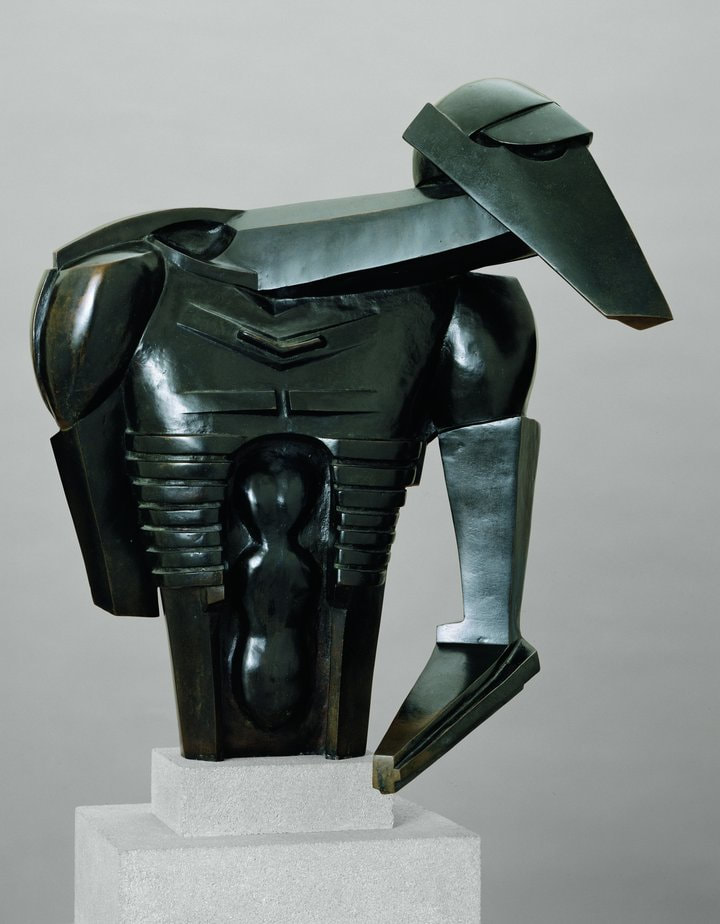
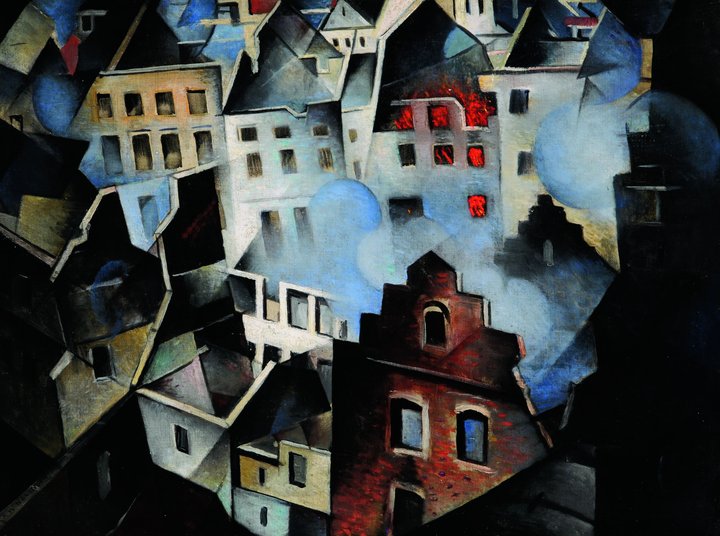



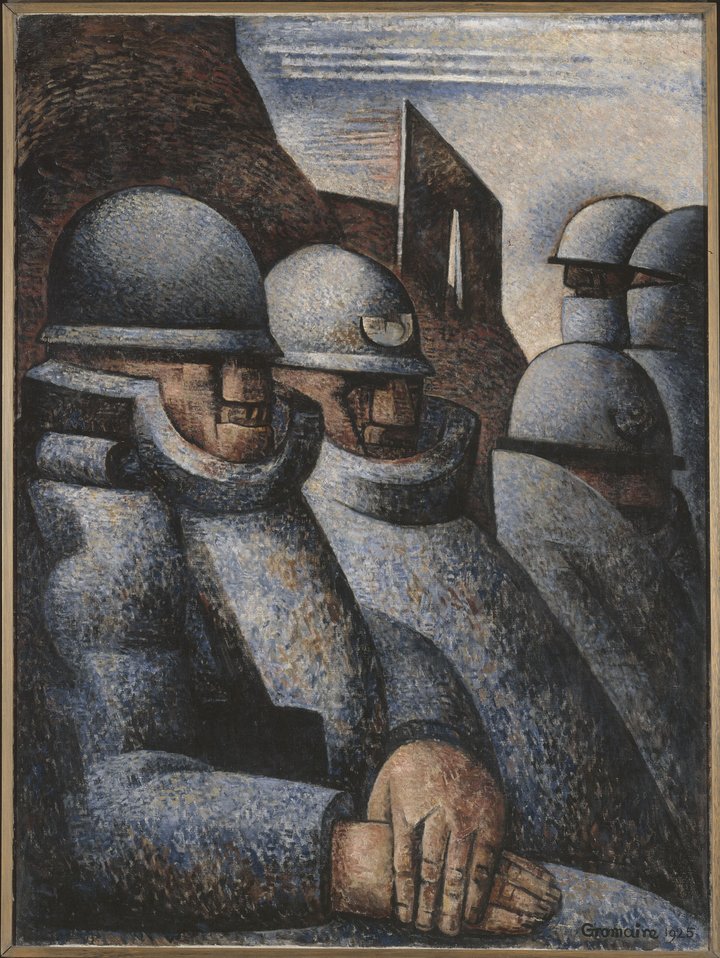
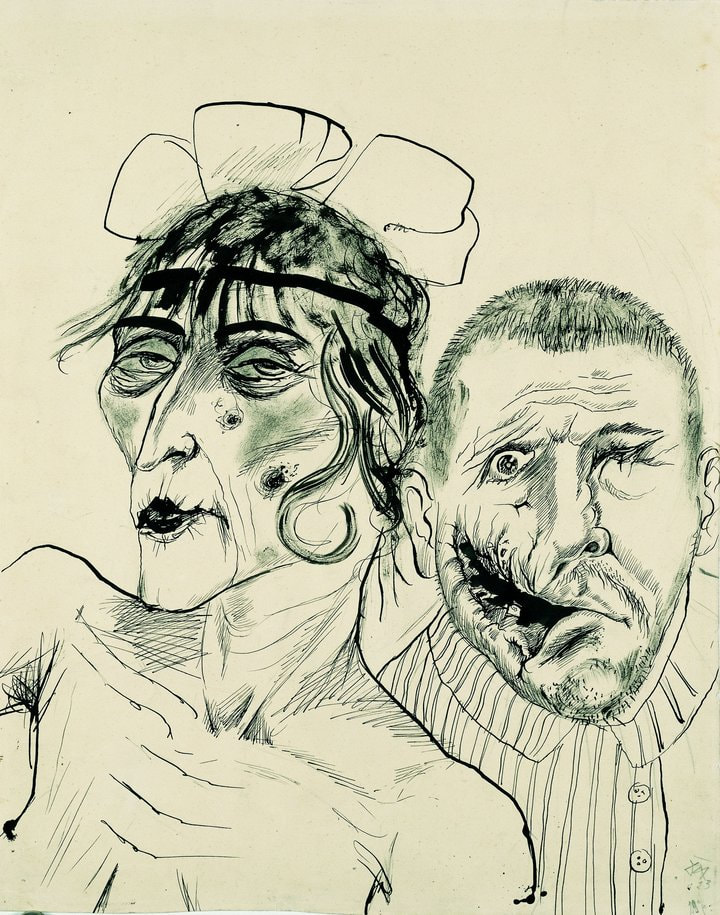


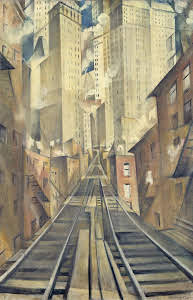
 RSS Feed
RSS Feed